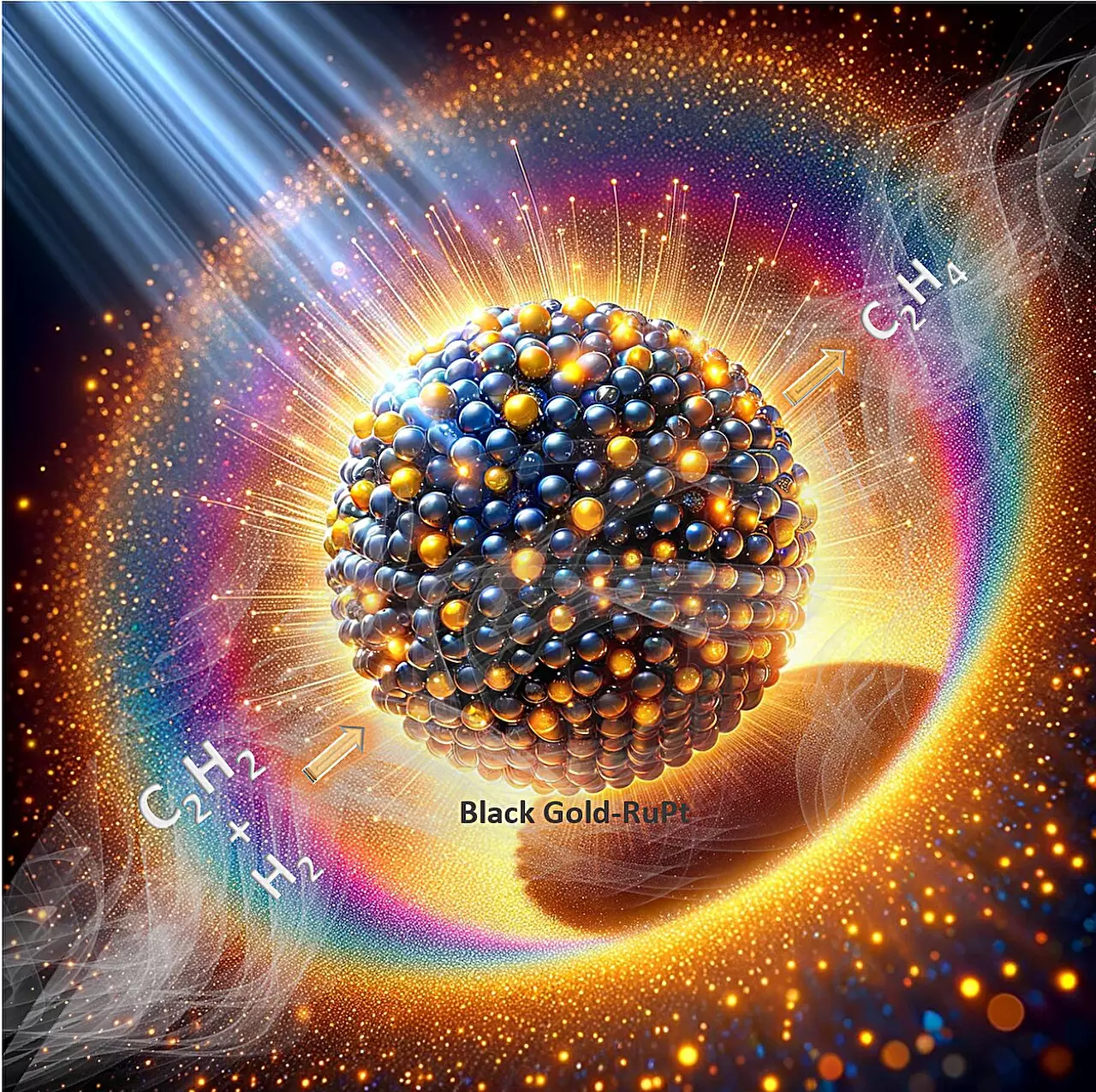In a groundbreaking development, the research group led by Prof. Polshettiwar at Tata Institute of Fundamental Research (TIFR) in Mumbai has pioneered a novel catalyst that defies the common instability of reduction catalysts in the presence of air. This “plasmonic reduction catalyst stable in air” combines platinum-doped ruthenium clusters with “plasmonic black gold.” The unique properties of this black gold allow it to efficiently harvest visible light and generate numerous hot spots, significantly enhancing its catalytic performance. This remarkable innovation has been detailed in a paper published in the prestigious journal, Nature Communications.
The catalyst showcases outstanding performance specifically in the semi-hydrogenation of acetylene, which is a critical industrial process. Remarkably, the catalyst achieved an ethene production rate of 320 mmol g−1 h−1 with approximately 90% selectivity, using only visible light illumination and without the need for external heating. This level of efficiency surpasses all known plasmonic and traditional thermal catalysts. Notably, the catalyst’s optimal performance is only achieved when air is introduced alongside the reactants, leading to unmatched stability for at least 100 hours. The researchers attribute this stability to plasmon-mediated simultaneous reduction and oxidation processes at the active sites during the reaction.
To gain a comprehensive understanding of the catalyst’s performance, the research team conducted finite-difference time-domain (FDTD) simulations, revealing a remarkable five-fold increase in the electric field compared to pristine DPC. This dramatic field enhancement, resulting from the near-field coupling between the RuPt nanoparticles and DPC, plays a critical role in activating chemical bonds. Moreover, the catalyst’s effectiveness is evident in its kinetic isotope effect (KIE), which is significantly larger under light compared to darkness at all temperatures. This finding underscores the substantial contribution of non-thermal effects alongside photothermal activation of the reactants.
Furthermore, the team conducted in-depth in-situ DRIFTS (Diffuse Reflectance Infrared Fourier Transform Spectroscopy) and DFT (Density Functional Theory) studies to gain key insights into the reaction mechanism over the oxide surface. These studies highlighted the crucial role of intermediates in selectivity, particularly emphasizing how the partially oxidized RuPt catalyst surface generates di-σ-bonded acetylene, which subsequently undergoes a series of transformations to produce ethene. These findings not only significantly contribute to the understanding of plasmonic catalysis but also pave the way for the development of sustainable and energy-efficient catalytic systems.
A New Era for Catalytic Systems
The development of the plasmonic reduction catalyst stable in air marks a turning point in catalytic research. By overcoming the inherent instability of reduction catalysts in the presence of air, this innovation opens up new possibilities for efficient and sustainable chemical processes. The catalyst’s unprecedented performance in the semi-hydrogenation of acetylene, along with its unique requirement for air, sets it apart from all known catalysts. With its remarkable stability and exceptional catalytic capabilities, the plasmonic reduction catalyst represents a promising step forward in the quest for more sustainable and energy-efficient catalytic systems.


Leave a Reply